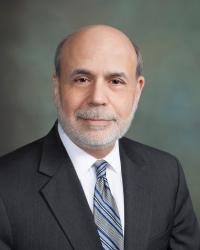

Research
BPEA | 2004 No. 2
2004, No. 2
The conventional instrument of monetary policy in most major
industrial economies is the very short term nominal interest rate, such as
the overnight federal funds rate in the case of the United States. The use
of this instrument, however, implies a potential problem: Because currency
(which pays a nominal interest rate of zero) can be used as a store of
value, the short-term nominal interest rate cannot be pushed below zero.
Should the nominal rate hit zero, the real short-term interest rate—at that
point equal to the negative of prevailing inflation expectations—may be
higher than the rate needed to ensure stable prices and the full utilization
of resources. Indeed, an unstable dynamic may result if the excessively
high real rate leads to downward pressure on costs and prices that, in turn,
raises the real short-term interest rate, which depresses activity and prices
further, and so on.